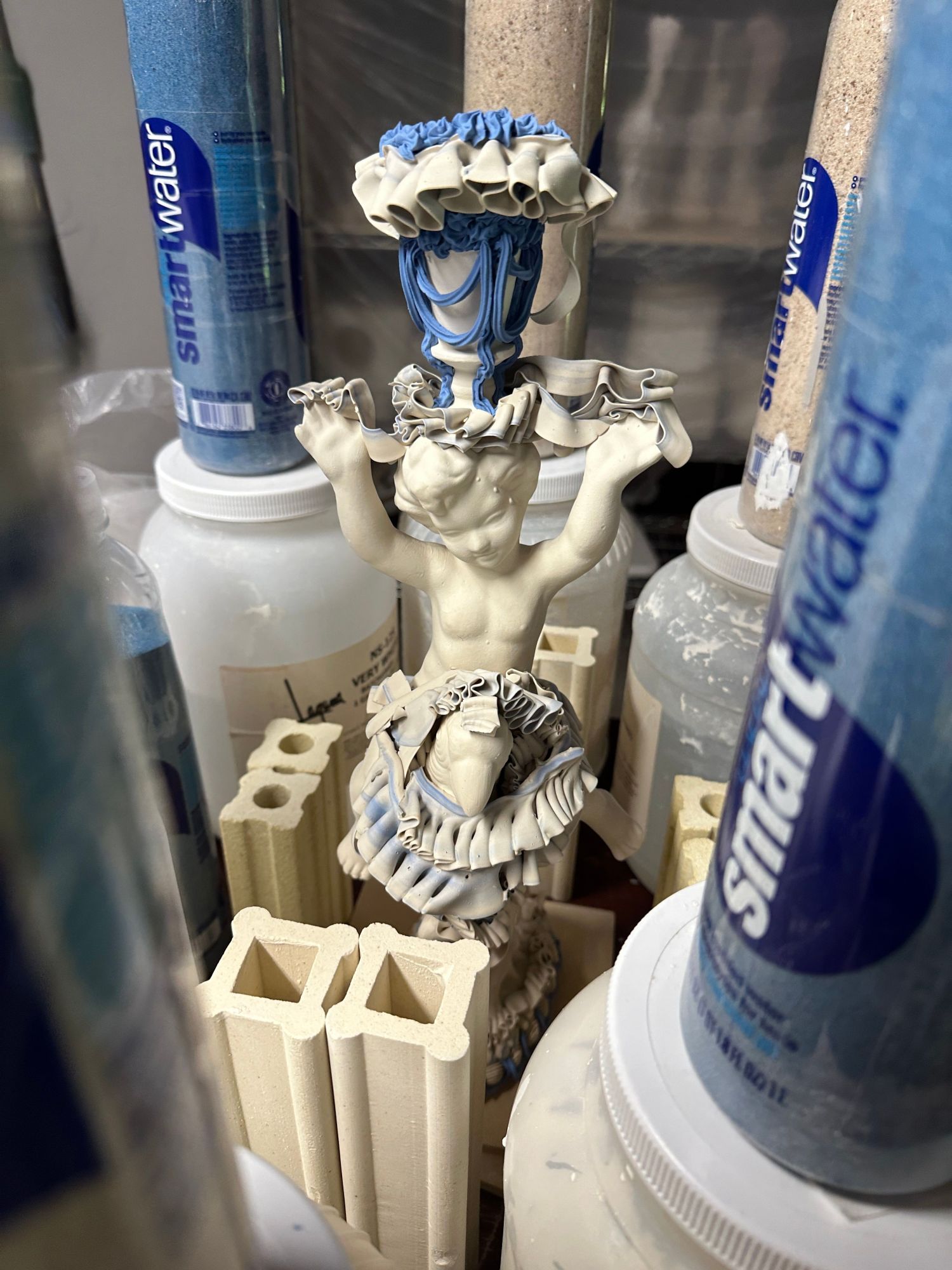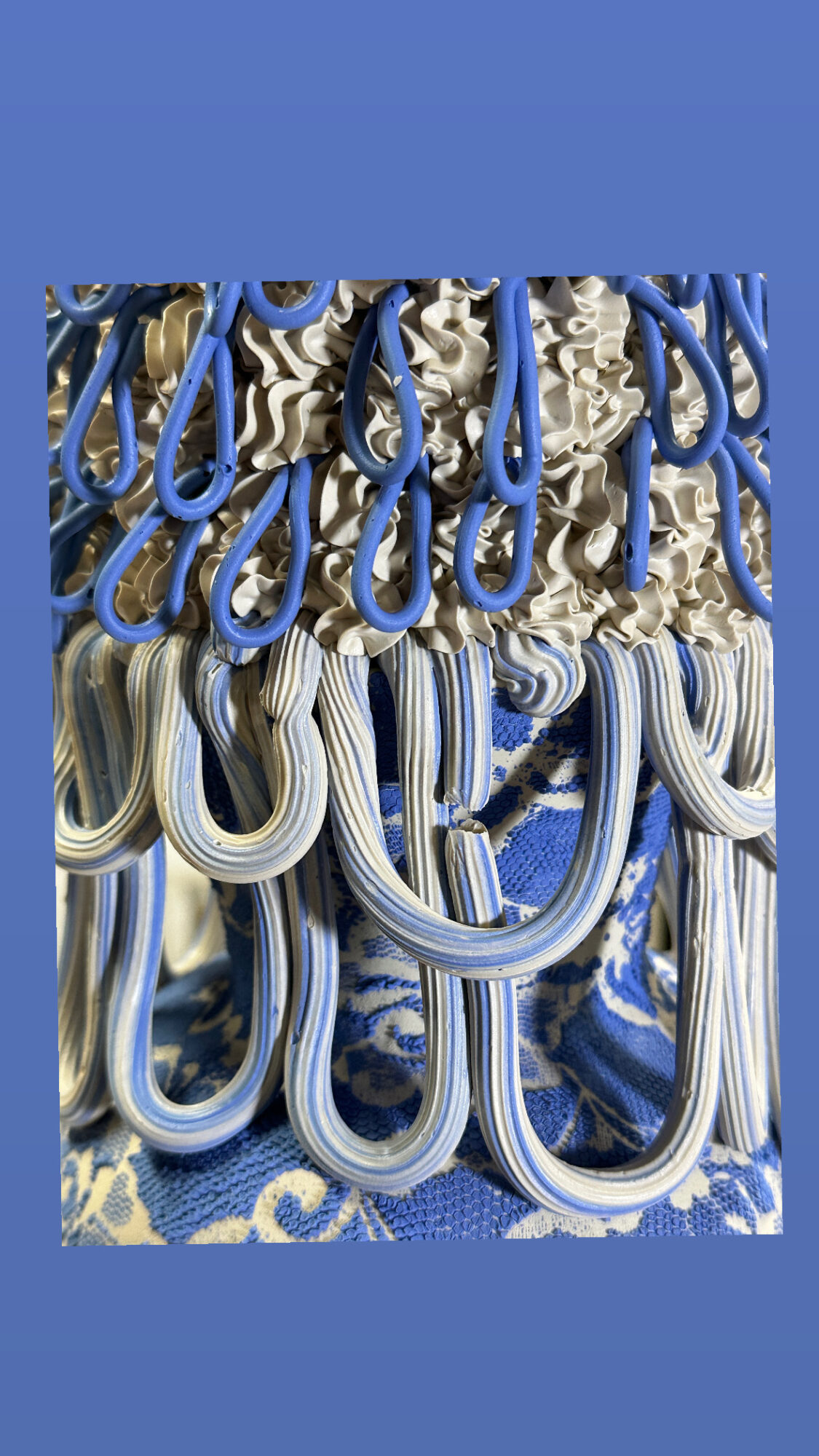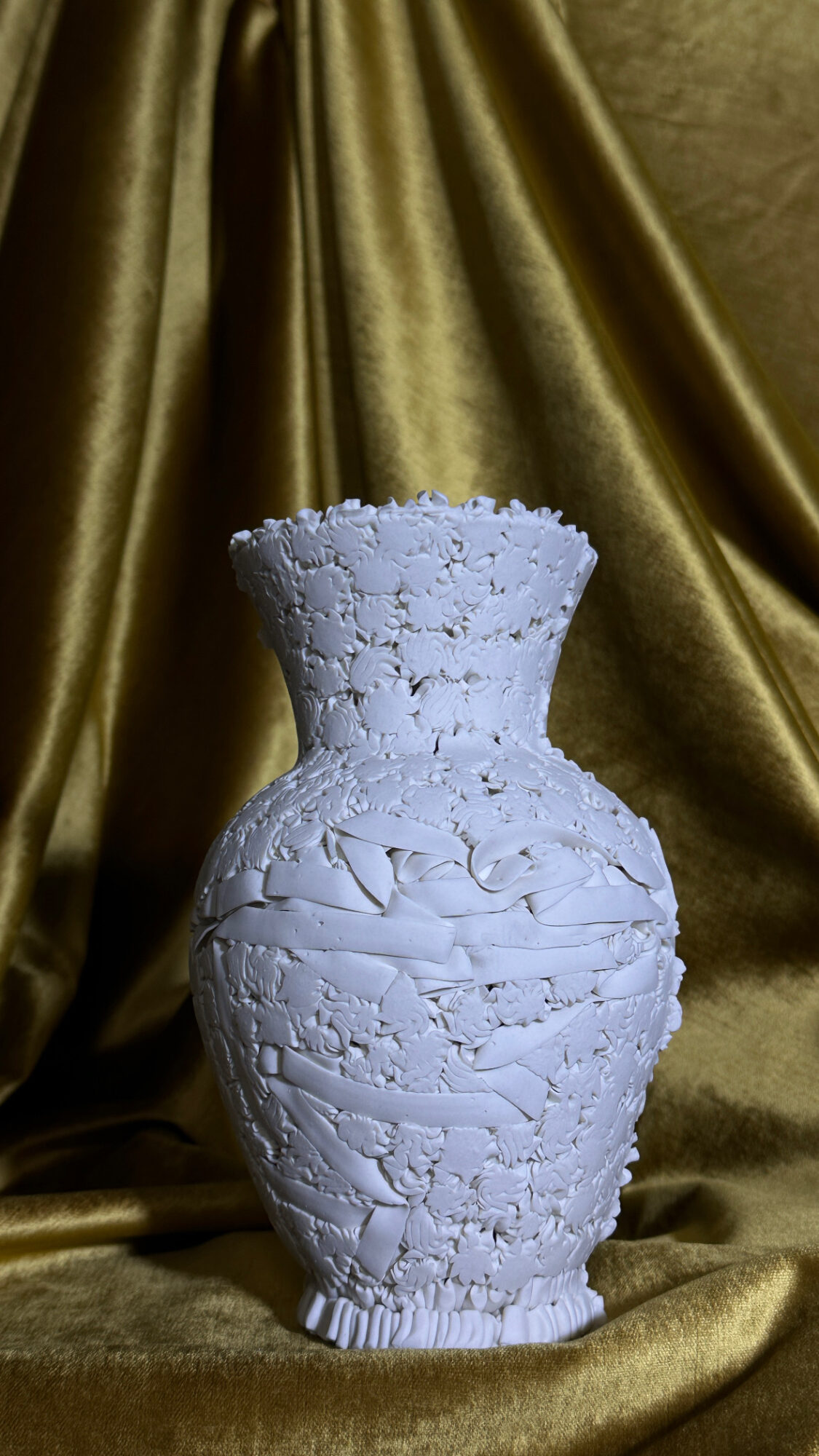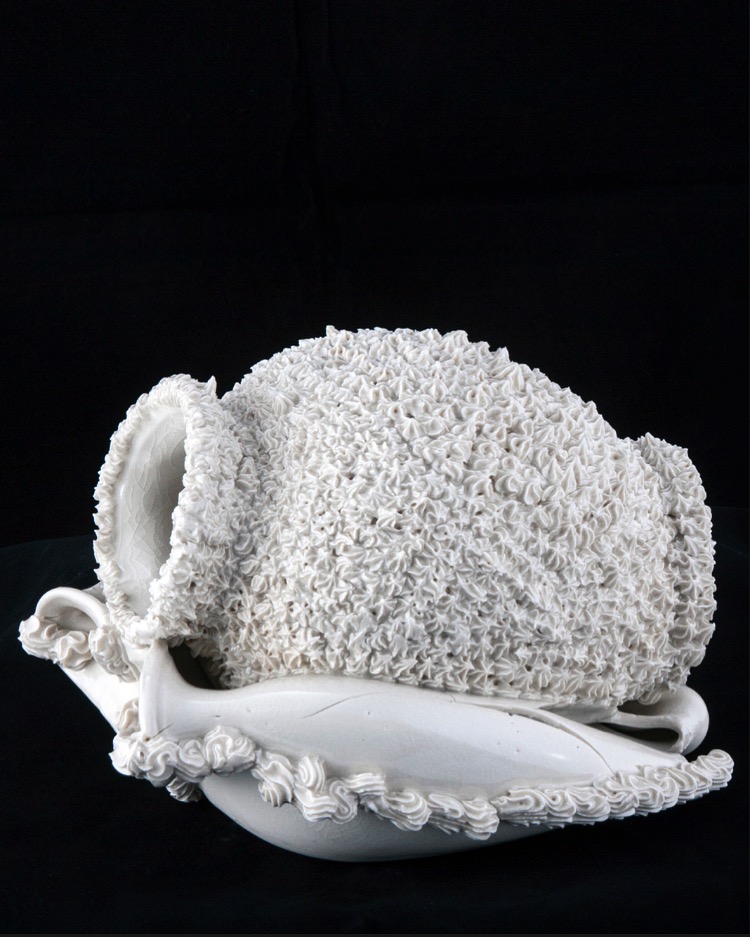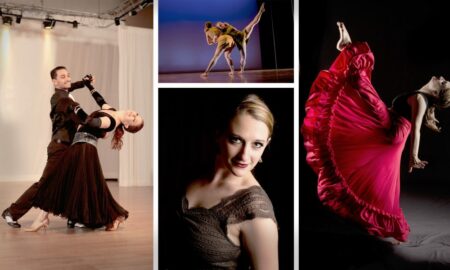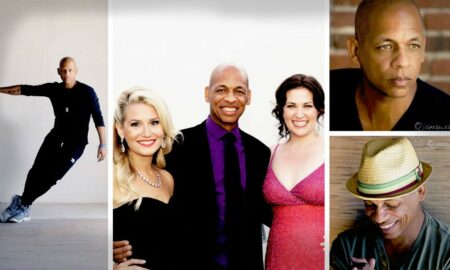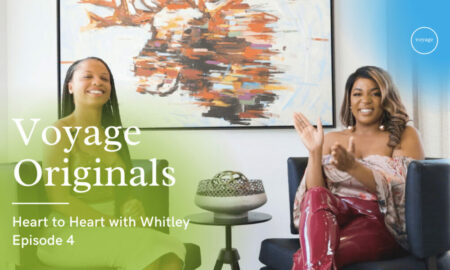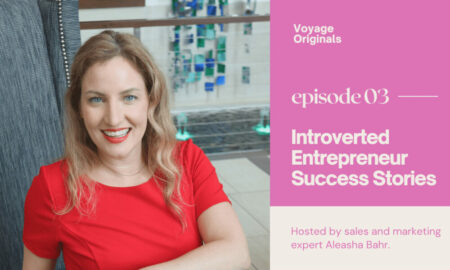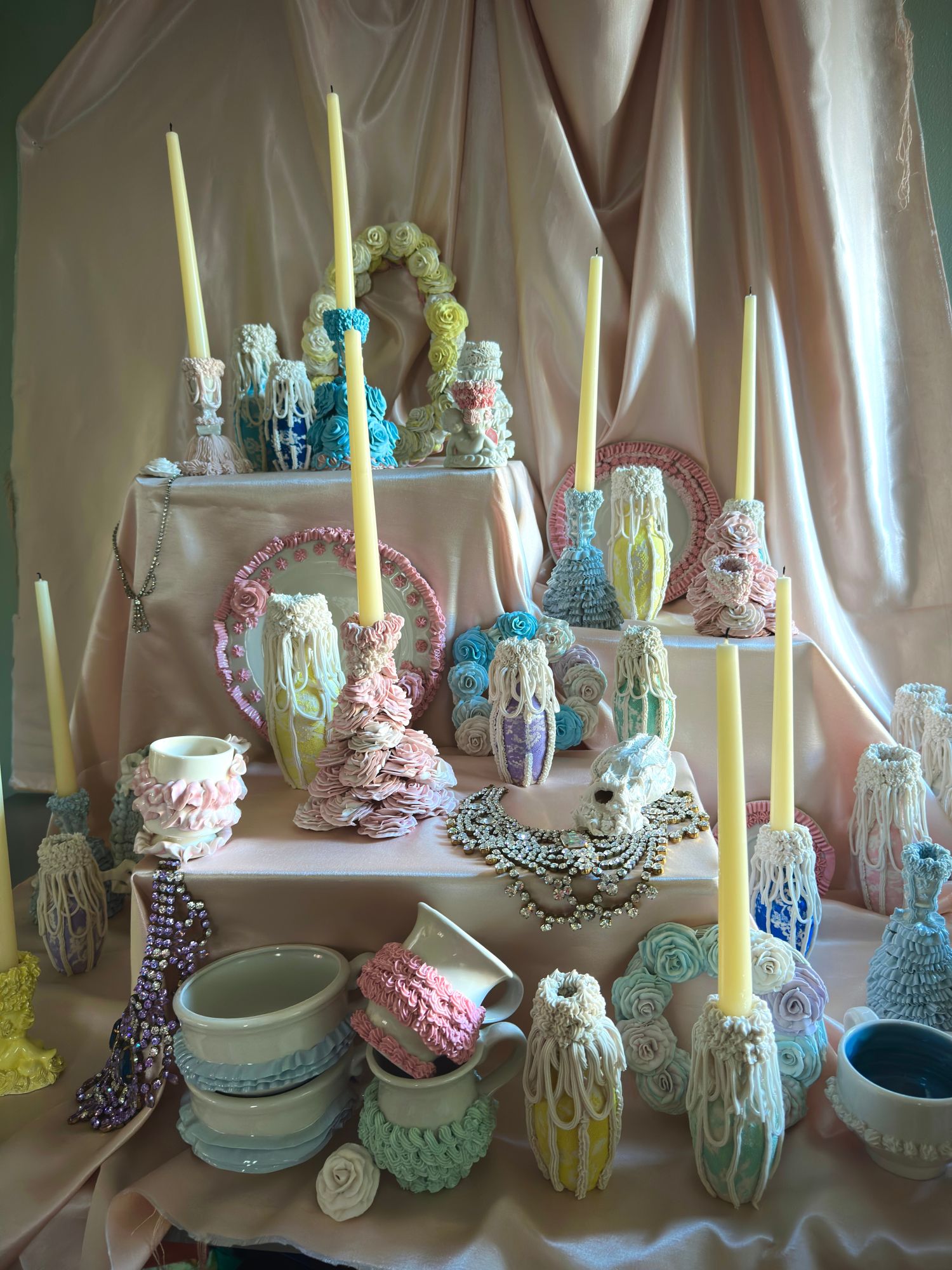

Today we’d like to introduce you to Robert Chamberlin.
Hi Robert, so excited to have you on the platform. So before we get into questions about your work-life, maybe you can bring our readers up to speed on your story and how you got to where you are today?
Everyone loves an origin story. I am from a family of crafters, with deep traditions in knitting, quilting and the most tedious crafts you can imagine. I remember hole punching wallpaper details to be used to cover blown out eggs, each tiny circle slightly overlapping the next creating an ornately scale like covering that would either end up a Santa clause or an angel. While my family wouldn’t have considered themselves or their creations art or artists they were always perfecting their craft and I was steep in making, and making resourcefully from a young age.
I was lucky to have arts education throughout my entire scholastic experience, a very distinct memory of making a coil pot in 6th grade and a constant draw towards photography and image making. Buying myself my first camera in 7th grade, an advantax Kodak camera, you could change the frame size from a normal image to panoramic, it took some time to figure out how to best utilize these features, you never saw the film as the cartridge was self loading and even after developing it remained incased, I still have them all the neg cassettes and when I find them in a box of other sentimental keep sakes I wonder if the technology is still around to open the case and use the negatives.
I moved to the suburbs of Atlanta (Kennesaw to be precise) and it was at Kennesaw Mountain High School where I started to find my voice as an artist. The school had a robust art program with 3 teachers, two of which I credit for fostering my abilities in ways I’m so thankful for. Starting in a ceramics class and falling in love with wheel throwing, something I teach regularly now, where my teacher strongly encouraged me to take photography, Mrs Nick was right Mrs Mack and I were two peas in a pod, her conceptual approach to photography was eye opening to me and fostered some projects that while not perfect certainly have threads to the photo work I continued making while studying photography at Georgia State University.
When I say that my time at GSU was magical I mean it in ways I can’t explain. It was a time in Atlanta where there was so much happening, Flux and Castleberry Hills were activated often, Edgewood Ave was starting to show a glimpse of what it is now. There was a show that spanned the breadth of Edgewood in the abandoned spaces that are now some of the most loved bars and haunts of downtown. I had a cohort of smart, driven, peers who pushed each other to be better with each critique, and class assignment while being collaborative and encouraging. Often spending hours upon days helping each other with shoots, and endless days working to create analog color and B&W prints. It is during my time at GSU that I became an adult alongside a group of friends and peers who have gone on to help continue to make Atlanta a cultural hub of the south. We took in everything Art, going to every lecture, artist talk, reading and discussing theory and making at a feverish pace. The faculty I was so privileged to work with, Nancy Floyd, Jyl Kelly, and Constance Thalken really modeled for us how to be artist and maybe more importantly how to be an artist in community with other artist, always letting us know about talks and events, incorporating these events into class when able and reminding us to say hello if we see them out. This is when they would introduce us to their colleagues and peers. I remember a professor saying, if you see me at an event, come over and say hello, if I’m talking to someone it maybe someone you should know and I’ll introduce you.” These introductions have and continue to be vital points of contact. And now when I have the opportunity to teach at the university level (and I’ve been lucky to have the opportunity to teach at GSU) I try to be just as generous to my students , inviting them to the art events I’ll be attending or am apart of.
As much as I loved the intensity of the photography program and my peers in it, I also craved to make things in a different way and always took a ceramics class or just went and hung out with the ceramics folks. It was a vibe shift, community is central to ceramics, I have close friends from both photo and ceramics but there was a kindness to ceramics that was lost to photography. The ceramics department had a long tradition of pot lucks and there was a chill supportive vibe to the majors and I found myself always needing to brake from the conceptually rigorous to focus on form and function. This is where the aesthetic of my ceramic work was born. I made a series of vases in a directed study ceramics class where I connected what a dear friend was doing with porcelain slip decoration and the cake decorating materials that had always been around my house as my mother would decorate cakes for extra money when I was growing up. So I asked to borrow them from my mom and never looked back. The series of vases were colored in pastels and each had an empty gallery, a theme that would continue for some time.
Knowing I wanted to continue to dive deeper into my art practice I applied to graduate school. Deciding between SMFA & Tufts Universities program in Boston and Bards program at the Internatoonal Center for Photography in NYC. My desire to study performance art as well as a large scholarship made SMFA the obvious choice. So after graduating with my BFA in Dec I left for Boston the following August with the motto to run towards scary, in a healthy safe way, but to not hold myself back because of fear. My time in Boston will always be a time of immense challenges and incredible reward. My peers at SMFA are some of the brightest people I have been privilege to know and friends that I cherish to this day. To say more would open a can of worms that would take too long to do that time period justice. My thesis show was shown at the then Howard Yezerski Gallery. Due to the schools abrupt change from a 3 year program to a 2 year program, a change non of us knew about until we arrived to our orientation, caused a larger number of graduates and the need for extra spaces to show our thesis work. So the school smartly reached out to Boston galleries and allowed them to pick students to have their thesis shows with. While I could say a lot about this change in the end it jump started a relationship with a gallery and gallerists that fostered my career directly after grad school. Taking me to Art Basel to show in Pulse Miami where my thesis work was all purchased. I arrived in Miami and checked into my hostel on Miami Beach, got a haircut and headed to my first art fair. Upon finding the Miller Yezerski booth Ellen Miller, who had merged her gallery with Howard’s mouthed to me, YOU SOLD EVERYTHING!! My work had sold out, I replied Everything? As we had brought almost 100 vases, shown on the floor a nod to my thesis install and a way to stop attendees in their tracks and draw them into the booth. It had worked! I continued to work with Howard and Ellen for years after that going to Volta NY during armory week in 2014 and another solo show in 2015 entitled Light My Fire, which was reviewed in the Boston globe.
I moved home to Atlanta after 5 years in Boston with the hopes of buying a house and building my own studio to work out of. Having worked out of Harvard ceramics post grad school, working in a cubicle sized space, I learned how to use that space to the fullest. Coming into the studio most mornings before work to pour slip into my molds returning after a 6-8 hour shift and working late into the night on candelabras and other objects for shows celebrating and morning my queer ancestors and those we lost in the AIDS epidemic. Often being one of two people there, the other being the janitor who became a constant cheerleader for my work, often taking work id thrown out in the garbage back to my station. While I’m so thankful for my time in that studio, I was yearning for more space and less eyes on me. My queer work and objects weren’t always seen as having value or weren’t understood by the other ceramicist often more pottery focused with functionality being key. I also kept loosing work to the long sloped trip to the kiln room.
Moving back to Atlanta, well Marietta with my parents at first. This return to home was so many things, this place that helped mold me in so many ways had kept evolving and it was so fun and at times such a weird task to reintroduce myself to the Atlanta of now (well then it was 2016). This new chapter was difficult, commuting to Columbus to teach, my first post grad university teaching experience.
It was around this time that I met Louise Shaw who nominated me for the Forward Arts Foundation’s Emerging Artist award and it was at the studio visit for that award where I was introduced to Marcia Wood and the beginning of a very important relationship with her and her gallery, one that continues to the present.
Would you say it’s been a smooth road, and if not what are some of the biggest challenges you’ve faced along the way?
Of course there have been struggles, from firing astronomical firing costs, studio space itself and the rising costs of materials. Currently I am so excited to have my own studio after a year plus without, however I need to upgrade the electricity so we have enough power to run the kiln, which will also require a new 240v outlet. usually in the studio challenges are so welcome, but logistical or life challenges that make studio time suffer are my least favorite kind of challenge. But even with challenges and at times very little studio time, I have let my practice be liquid and fill the container it’s in and adapt to the constraints of the moment. There was a period when I only had 1 studio day a week and often it might be 2-4 hours of studio time. So I made things that were on a smaller scale and knew I only had that day to complete whatever i’m making as I wouldn’t be in the studio again for 6 days. When I was without any ceramic studio space for almost a year I leaned into photography and book making, finding my way back to the image through printing scrolls of images from my phone lofi on a thermal printer, playing with sequence, repetition, and narrative. While in tandem learning how to bind books and started creating sketchbooks and small artist books utilizing cyanotypes I made of past negatives.
Can you tell our readers more about what you do and what you think sets you apart from others?
Porcelain has been at the forefront of my art practice since 2012. Chosen as a means to investigate desire, drawing on the materials history or western desire porcelain became the perfect medium to talk about my own desires as well as the desires of others. I am so proud to still be making work so many years after leaving school and continuing to build community with other artists. I am so proud that I embraced failure long ago and it has become a pillar of my investigations. When I say it can sometimes take me 10 plus times of trying to create something with it failing again and again until I solve the myriad of issues that I encounter during the creating process.
I have a unique perspective that comes from growing up with a military father and having the privilege of growing up for a time on each coast of the United States as well as having experienced rural Western MA and the urban sprawl of Atlanta, being born in Germany to start it all gave me a wider view of the world than some of my peers growing up. Living on Air Force bases and growing up with kids from families all over the country and world was so wonderful, experiencing cultures outside of my families from a young age cultivating a curious nature and respect for others customs. I hope my open source aspect to art doesn’t set me apart but sets an example that there is room for more artists working in my medium or even with the techniques I have spent time pushing further and further.
I tend to create a lot of work and love putting 100 plus vessels or ceramic objects in a space to transport the viewer into another place. Often using beauty as a device to draw the viewer in and captivate them so that I can say things about the problematics of desire, queerness and failure. The work is beautiful but it is also sharp and dangerous. I also make
Do you any memories from childhood that you can share with us?
Maybe not my favorite but a memory that I keep coming back to is going to see the redwoods in northern California as a kid. I still remember the awe of their scale and having a very active imagination. I think that seeing those trees in adulthood would be just as magical as seen through my 7 year old eyes.
Pricing:
- Studio Chamberlin $24 – $450
- For past Robert Chamberlin Pieces Contact Marcia Wood Gallery
Contact Info:
- Website: robertchamberlin.com
- Instagram: @studiochamberlin
